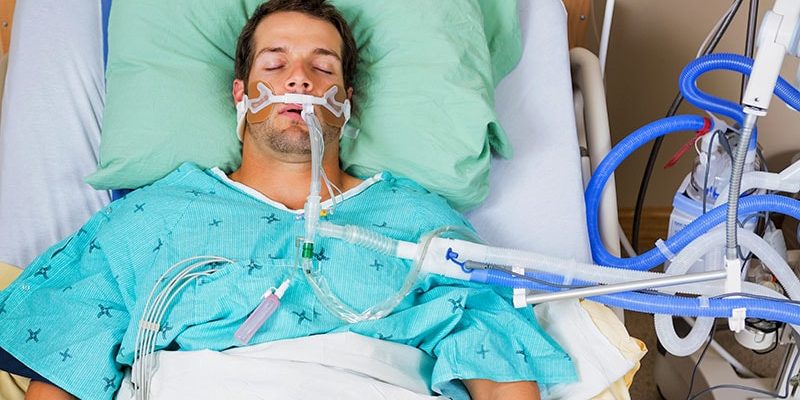Maintaining a slightly elevated CO2 level (hypercapnia) for the first 24 hours in comatose patients who had been resuscitated after out-of-hospital cardiac arrest did not improve outcomes in a large randomized controlled trial.
The Targeted Therapeutic Mild Hypercapnia After Resuscitated Cardiac Arrest (TAME) study showed that the intervention failed to improve neurologic or functional outcomes or quality of life at 6 months. However, the researchers also found that slightly elevated CO2 levels were not associated with worse outcomes.
“I think these results show that our hypothesis ― that raising CO2 levels as applied in this trial may be beneficial for these patients ― was not effective, even though previous work suggested that it would be,” co–lead investigator Alistair Nichol, MD, told theheart.org | Medscape Cardiology.
“This was a rigorous trial; the intervention was well delivered, lidocaine epinephrine drug interactions and the results are pretty clear. Unfortunately, we have proved a null hypothesis ― that this approach doesn’t seem to work,” Nichol, who is, professor of critical care medicine at University College Dublin School of Medicine, Ireland, said.
“However, we did find that hypercapnia was safe. This is an important finding, as sometimes in very sick patients such as those who develop pneumonia, we have to drive the ventilator less hard to minimize injury to the lungs, and this can lead to higher CO2 levels,” he added. “Our results show that this practice should not be harmful, which is reassuring.”
The TAME study was presented on June 15 at the Critical Care Reviews 2023 Meeting (CCR23) being held in Belfast, Northern Ireland.
It was simultaneously published online in The New England Journal of Medicine.
The researchers explain that after the return of spontaneous circulation, brain hypoperfusion may contribute to cerebral hypoxia, exacerbate brain damage, and lead to poor neurologic outcomes. The partial pressure of arterial carbon dioxide (PaCO2) is the major physiologic regulator of cerebrovascular tone, and increasing CO2 levels increases cerebral blood flow.
Two previous observational studies showed that exposure to hypercapnia was associated with an increase in the likelihood of being discharged home and better neurologic outcomes at 12 months compared with hypocapnia or normocapnia.
In addition, a physiologic study showed that deliberate increases in PaCO2 induced higher cerebral oxygen saturations compared with normocapnia. A phase 2 randomized trial showed that hypercapnia significantly attenuated the release of neuron-specific enolase, a biomarker of brain injury, and also suggested better 6-month neurologic recovery with hypercapnia compared with normocapnia.
The current TAME trial was conducted to try to confirm these results in a larger, more definitive study.
For the trial, 1700 adults with coma who had been resuscitated after out-of-hospital cardiac arrest were randomly assigned to receive either 24 hours of mild hypercapnia (target PaCO2, 50 – 55 mm Hg) or normocapnia (target PaCO2, 35 – 45 mm Hg).
The primary outcome ― a favorable neurologic outcome, defined as a score of 5 or higher on the Glasgow Outcome Scale–Extended at 6 months ― occurred in 43.5% in the mild hypercapnia group and in 44.6% in the normocapnia group (relative risk, 0.98; P = .76).
By 6 months, 48.2% of those in the mild hypercapnia group and 45.9% in the normocapnia group had died (relative risk with mild hypercapnia, 1.05; 95% CI, 0.94 – 1.16). In the mild hypercapnia group, 53.4% had a poor functional outcome, defined as a Modified Rankin Scale score of 4 to 6, compared with 51.3% in the normocapnia group.
Health-related quality of life, as assessed by the EQ Visual Analogue Scale component of the EuroQol-5D-5L, was similar in the two groups.
In terms of safety, results showed that mild hypercapnia did not increase the incidence of prespecified adverse events.
The authors note that there is concern that mild hypercapnia may worsen cerebral edema and elevate intracranial pressure; however, elevated intracranial pressure is uncommon in the first 72 hours after the return of spontaneous circulation.
In the TAME trial, there was one case of cerebral edema in the hypercapnia group. “This is a very low rate and would be expected in a group this size, so this does not indicate a safety concern,” Nichol commented.
The researchers are planning further analyses of biological samples to look for possible prognostic markers.
“These out-of-hospital cardiac arrest patients are a very diverse group, and it may be possible that some patients could have benefited from hypercapnia while others may have been harmed,” Nichol noted.
“Raising CO2 levels does improve overall delivery of oxygen to the brain, but this might not have occurred in the right areas. It may be possible that some patients benefited, and analysis of biological samples will help us look more closely at this.”
He added that other ongoing trials are investigating hypercapnia in patients with traumatic brain injury.
“These patients are managed differently and often have probes in their brain to measure the response to CO2, so more of a precision medicine approach is possible,” he explained.
He also noted that the TAME study, which was conducted in conjunction with the TTM-2 study investigating hypothermia in out-of-hospital cardiac arrest patients, has established a network of ICU teams around the world, providing an infrastructure for further trials to be performed in this patient population in future.
The TAME trial was funded by the National Health and Medical Research Council of Australia, the Health Research Board of Ireland, and the Health Research Council of New Zealand.
Critical Care Reviews 2023 Meeting (CCR23): Presented June 15, 2023.
N Engl J Med. Published online June 15, 2023. Abstract
For more news, follow Medscape on Facebook, Twitter, Instagram, and YouTube.
Source: Read Full Article
